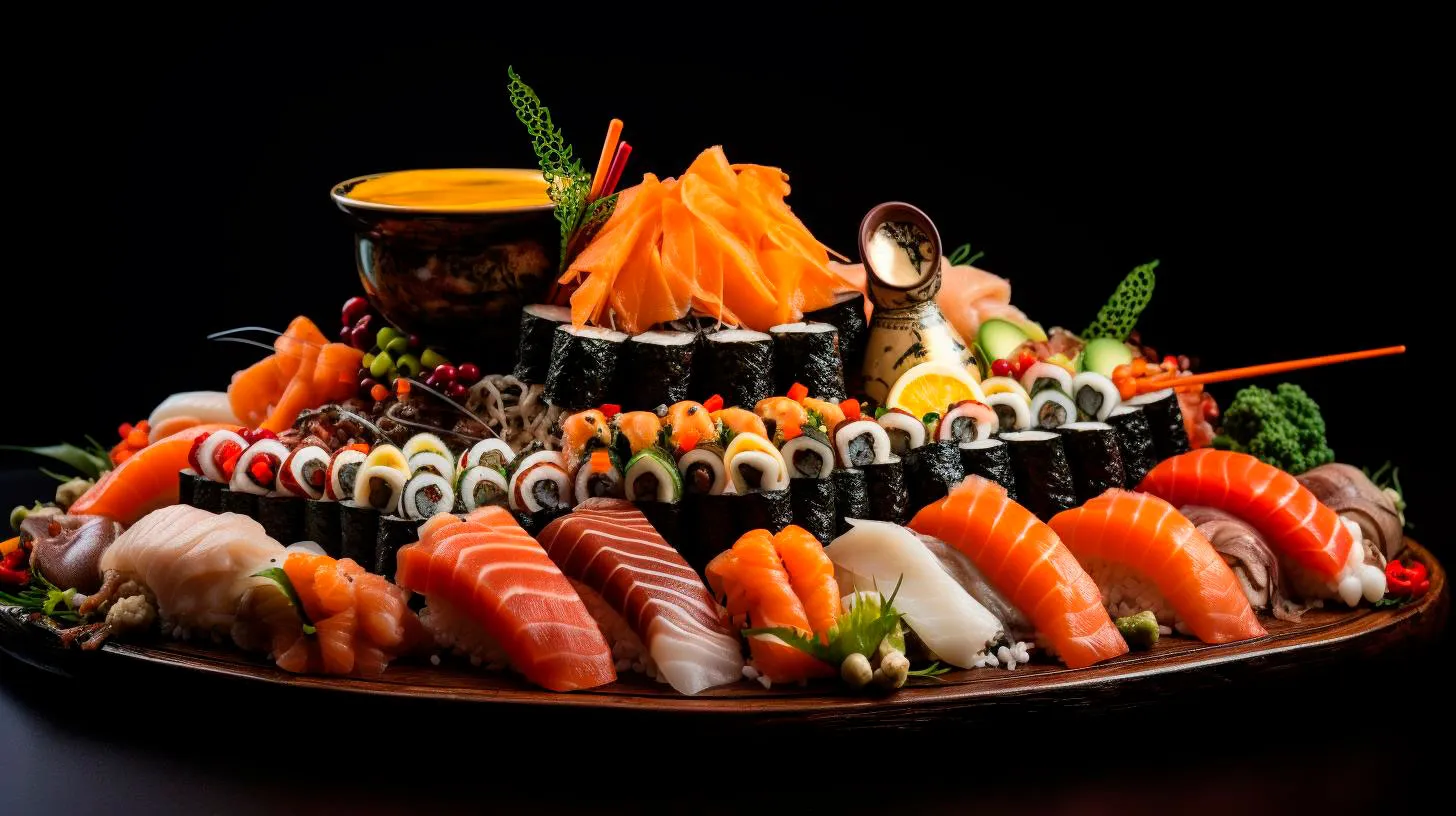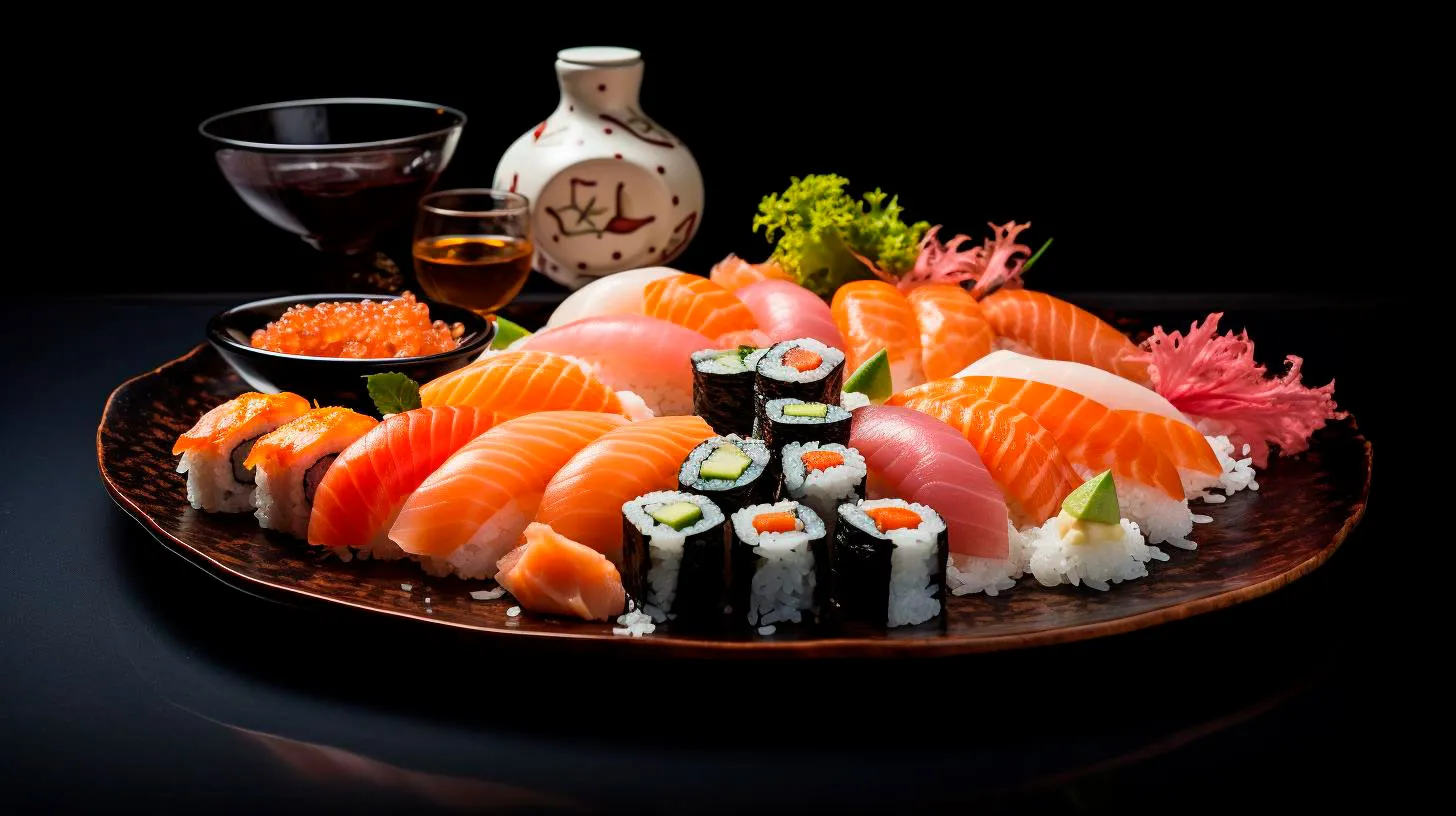The Art of Brewing Japanese Tea: Mastering Traditional Techniques
The Rich History of Japanese Tea
Japan has a long and storied history of tea cultivation. The art of brewing tea has been passed down through generations, and today, it is still considered an integral part of Japanese culture. Typically, Japanese tea refers to green tea, which is made from the leaves of the Camellia sinensis plant. The most common types of Japanese green tea include sencha, matcha, gyokuro, and hojicha.
Japanese tea ceremonies, also known as chanoyu, highlight the meticulousness and attention to detail that goes into the brewing process. These ceremonies have deep cultural significance and are often regarded as meditative experiences.
The Brewing Process: A Delicate Balance
Brewing Japanese tea requires precision and a thorough understanding of the art form. Here are the key steps to master traditional Japanese tea brewing:
- Water Temperature: Different types of tea require specific water temperatures for optimal brewing. For example, sencha is brewed at around 70-80 degrees Celsius, while gyokuro demands a lower temperature of around 50-60 degrees Celsius. Achieving the right water temperature is crucial to unlocking the flavor profiles of each tea.
- Teapot Selection: Choosing the right teapot is essential for the brewing process. Porcelain and clay teapots, such as those made with Tokoname or Banko clay, are popular choices. These materials are known for their ability to retain heat and enhance the flavors of the tea.
- Tea Leaves: Selecting high-quality tea leaves is imperative for a delightful brewing experience. The freshness and grade of the tea leaves directly impact the aroma, taste, and overall appreciation of the tea. Opt for reputable sources and consider exploring different tea varieties to expand your palate.
- Brewing Time: Each tea variety has its own recommended brewing time. For example, sencha typically requires 1-2 minutes, while matcha is whisked for a shorter duration. Paying attention to the brewing time ensures that the tea unfolds its unique flavors and avoids any bitterness or astringency.
- Pouring and Serving: Pouring the brewed tea into delicate teacups is an art in itself. The tea is poured in a circular motion to ensure consistency in the strength of each cup. Serve the tea with grace and humility, appreciating the efforts and history that went into its creation.
The Benefits of Japanese Tea
Beyond its cultural significance, Japanese tea offers a myriad of benefits for both body and mind. Here are some key advantages that make Japanese tea worth exploring:
- Antioxidant Powerhouse: Japanese green tea, especially matcha, is abundant in antioxidants known as catechins. These compounds help combat free radicals and reduce the risk of chronic diseases.
- Healthy Calorie-free Beverage: Japanese tea is virtually calorie-free, making it an ideal choice for those watching their weight or looking for a healthier alternative to sugary drinks. Additionally, it contains polyphenols that can aid in digestion and boost metabolism.
- Enhanced Focus and Relaxation: The amino acid L-theanine found in Japanese tea promotes relaxation and improves focus. It provides a calm energy that can help maintain alertness without the jitters associated with coffee.
- Improved Overall Well-being: The combination of antioxidants, vitamins, and minerals in Japanese tea contributes to improved overall well-being. Regular consumption of Japanese tea has been linked to reduced stress levels, increased immunity, and improved cardiovascular health.
Key Takeaways
Brewing Japanese tea is a harmonious blend of art, tradition, and precision. Mastering the techniques involved in Japanese tea brewing not only allows you to appreciate its cultural significance but also rewards you with a delightful and soothing experience.
Remember these key takeaways as you embark on your journey into the world of Japanese tea:
- Pay attention to water temperature and select the appropriate teapot for each tea variety.
- Choose high-quality tea leaves for an enhanced flavor profile.
- Respect brewing times to avoid bitterness and bring out the tea’s unique qualities.
- Pour and serve the tea with grace, acknowledging its history and craftsmanship.
Exploring the benefits of Japanese tea beyond its cultural significance reveals a world of antioxidants, improved well-being, and a healthier alternative to sugary drinks. So take a moment to savor the flavors of Japan and immerse yourself in the art of Japanese tea brewing!
The Ritual of Japanese Tea Ceremonies: A Harmonious Blend of Tradition and Hospitality
It is much more than a simple beverage preparation; it is an immersive experience that stimulates all the senses while promoting a sense of connection with nature and oneself.
The Beauty of Japanese Tea Ceremonies
During a Japanese tea ceremony, participants enter a ritualized space, traditionally a serene tea room or garden tea house, disconnected from the outside world. The room is thoughtfully decorated with natural elements, such as flowers, ceramics, and calligraphy, creating an atmosphere of refined simplicity.
The ceremony is led by a tea master, a person highly skilled in the art of tea preparation and knowledgeable about Japanese aesthetics and philosophy. The tea master guides the guests through each step of the ceremony, ensuring they fully appreciate the harmony and beauty of the ritual.
One of the key elements of the Japanese tea ceremony is the use of traditional tea utensils, such as a chawan (tea bowl), chasen (bamboo whisk), and chashaku (tea scoop). These utensils are meticulously selected and crafted, reflecting the values of simplicity, elegance, and attention to detail that are deeply ingrained in Japanese culture.
The Ritual Elements
The Japanese tea ceremony consists of intricate rituals and specific gestures that symbolize respect, gratitude, and mindfulness. Some of the most important elements include:
- Purification: Before the ceremony begins, participants cleanse their hands and mouths, symbolizing a purification of body and mind.
- Wagashi: Traditional Japanese sweets are served prior to drinking tea as a way to balance the bitterness of the matcha and enhance the overall experience.
- Preparation of Matcha: The tea master carefully measures and whisks powdered green tea, known as matcha, with hot water to create a frothy and vibrant beverage.
- Tea Serving Etiquette: The tea is served to each guest with utmost care and respect, symbolizing hospitality and gratitude.
- Tea Bowl Rotation: The tea bowl is admired and appreciated by each guest before taking a sip. They rotate the bowl in a prescribed manner to fully appreciate its craftsmanship.
The Symbolism and Philosophy
Japanese tea ceremonies hold deep symbolic meanings that reflect the values and philosophy of Japanese culture. Some significant aspects include:
- Wabi-sabi: The concept of finding beauty in imperfection and embracing simplicity and naturalness.
- Harmony with Nature: The tea ceremony emphasizes the connection with nature. Seasons and natural elements are reflected in flower arrangements and the choice of tea utensils.
- Mindfulness and Presence: Participants are encouraged to be fully present and engage all their senses in the moment, fostering a sense of calmness and introspection.
- Hospitality and Respect: The tea ceremony embodies the spirit of hospitality and respect towards others, creating a harmonious and inclusive atmosphere.
The Benefits and Takeaways
Participating in a Japanese tea ceremony provides numerous benefits and valuable takeaways:
- Relaxation and Stress Relief: The serene environment and meditative nature of the ceremony help to reduce stress and promote relaxation.
- Mindfulness Practice: The tea ceremony encourages being fully present, enhancing mindfulness skills that can be applied in everyday life.
- Cultural Appreciation: Engaging in the tea ceremony allows participants to immerse themselves in Japanese culture, gain a deeper understanding of its traditions, and foster cultural appreciation.
- Outer and Inner Harmony: The tea ceremony fosters a sense of harmony with oneself, others, and nature, promoting a holistic well-being.
In Conclusion
The Japanese tea ceremony is a harmonious blend of tradition, beauty, and hospitality. It is a revered practice that embodies the principles of mindfulness, respect, and tranquility. Engaging in a tea ceremony not only provides a glimpse into Japanese culture but also offers a transformative experience that nurtures the body, mind, and soul.
From Sencha to Matcha: Exploring the Diversity of Japanese Tea
1. Sencha: A Refreshing and Bright Green Tea
Sencha is one of the most popular types of Japanese green tea. It is made from the tender leaves of the Camellia sinensis plant, which are steamed and then rolled into thin needles. The infusion yields a bright green liquor with a refreshing taste and mild sweetness.
- Sencha is known for its high vitamin C content, which boosts the immune system and promotes overall wellness.
- Regular consumption of sencha has been linked to improved brain function and mental alertness.
- With its antioxidant properties, sencha helps to combat free radicals and reduce the risk of chronic diseases.
2. Gyokuro: The Jewel of Japanese Tea
Gyokuro, often referred to as the “jade dew,” is regarded as one of the highest grades of tea in Japan. The tea leaves are shade-grown for several weeks before harvesting, resulting in a rich and umami flavor. Gyokuro is known for its vibrant green color and delicate aroma.
- Gyokuro is cherished for its unique flavor profile, combining sweetness and bitterness, with a hint of seaweed-like taste.
- Due to the shading process, gyokuro contains more theanine, an amino acid that induces relaxation and a sense of calmness.
- Research suggests that gyokuro may help lower blood pressure and reduce the risk of heart disease.
3. Matcha: The Artful Green Powder
Matcha, the vibrant green tea powder, has gained immense popularity worldwide. Unlike sencha and gyokuro, matcha is made from shade-grown tea leaves that are ground into a fine powder. This powdered form allows for a unique and concentrated flavor experience.
- Matcha is renowned for its high levels of antioxidants, specifically catechins, which support immune function and promote healthy skin.
- Due to its caffeine content and the presence of L-theanine, matcha provides a sustained and calm energy boost without the jitters associated with coffee.
- The ritualistic preparation and consumption of matcha, known as the Japanese tea ceremony, demonstrate the cultural significance and mindfulness associated with this tea.
4. Hojicha: The Toasty Roasted Tea
Hojicha is a unique type of Japanese tea that sets itself apart with its toasty and nutty flavor profile. Unlike other green teas, hojicha is made from roasted green tea leaves, resulting in a reddish-brown infusion.
- The roasting process gives hojicha its low caffeine content, making it an excellent option for those sensitive to caffeine or seeking a calm experience.
- Studies have found that hojicha may have anti-inflammatory effects and can support digestive health.
- With its distinct flavor and low bitterness, hojicha is an excellent choice for both tea novices and aficionados.
Key Takeaways
Japanese tea offers a wide range of flavors and health benefits that cater to various preferences and needs. Here are the key takeaways from our exploration:
- Sencha, a popular and refreshing green tea, is packed with immune-boosting properties.
- Gyokuro, a shade-grown tea, offers a unique balance of sweetness and umami flavor.
- Matcha, the vibrant green powdered tea, is rich in antioxidants and provides a sustained energy boost.
- Hojicha, a roasted green tea, boasts a toasty flavor and low caffeine content for a calming experience.
As you embark on your journey to discover Japanese tea, remember to indulge in its diverse flavors, embrace the cultural significance, and savor each sip that connects you to the tea traditions of Japan.
Unearthing the Health Benefits of Japanese Green Tea
In this article, we will delve into the intricate details of Japanese green tea and uncover the remarkable advantages it brings to your overall well-being.
The Origin and Cultivation of Japanese Green Tea
Japan has a rich history of cultivating and consuming different varieties of tea. The story of Japanese green tea began in the 8th century when it was introduced to Japan by Buddhist monks returning from China. Since then, the cultivation techniques have evolved, resulting in the distinctive characteristics and unparalleled quality that Japanese green tea possesses today.
The tea leaves used to make Japanese green tea are shade-grown, which helps in their unique development. This process ensures the tea leaves retain their vibrant green color and accumulate higher levels of antioxidants. After harvesting, the leaves are steamed, dried, and ground into a fine powder, allowing the tea to be consumed whole, which significantly enhances its health benefits.
Health Benefits of Japanese Green Tea
1. Rich in Antioxidants
Japanese green tea is packed with powerful antioxidants called catechins, particularly epigallocatechin gallate (EGCG). These antioxidants help combat free radicals in the body, preventing cell damage and reducing the risk of chronic illnesses such as heart disease, cancer, and neurodegenerative disorders.
2. Boosts Metabolism and Aids in Weight Loss
Drinking Japanese green tea can help increase metabolism and aid in weight loss. Studies have shown that the catechins present in green tea can enhance fat oxidation and improve insulin sensitivity, leading to a more efficient calorie-burning process.
3. Enhances Brain Function
Regular consumption of Japanese green tea has been linked to improved brain function. The combination of caffeine and a unique amino acid called L-theanine found in green tea can enhance cognitive performance, focus, and overall mental alertness.
4. Promotes Heart Health
Drinking Japanese green tea can have a positive impact on heart health. The antioxidants in green tea help reduce cholesterol levels, lower blood pressure, and improve cardiovascular function, thereby decreasing the risk of heart disease.
5. Supports Immune System
The antibacterial and antiviral properties of Japanese green tea make it an excellent choice for boosting the immune system. Regular consumption of green tea can help prevent common infections and promote overall health and well-being.
Ways to Incorporate Japanese Green Tea into Your Daily Routine
Now that you are aware of the incredible health benefits of Japanese green tea, let’s explore some easy ways to incorporate this amazing beverage into your daily routine:
- Enjoy a hot cup of green tea in the morning to kickstart your day.
- Replace sugary drinks with iced green tea for a refreshing and healthy alternative.
- Add matcha powder to smoothies or baked goods for a delightful twist.
- Experiment with traditional Japanese tea ceremonies to fully embrace the culture and rituals surrounding green tea.
Remember, the key lies in making it a habit. Consistent consumption will allow you to reap the maximum benefits of Japanese green tea in the long run.
Conclusion
Japanese green tea is not just a flavorful and refreshing beverage; it is also packed with countless health benefits. From its antioxidant properties and metabolism-boosting effects to its positive impact on brain function and heart health, this remarkable tea offers a multitude of advantages. Embrace the rich history and culture of Japanese tea and experience the incredible benefits it brings to your overall well-being.


